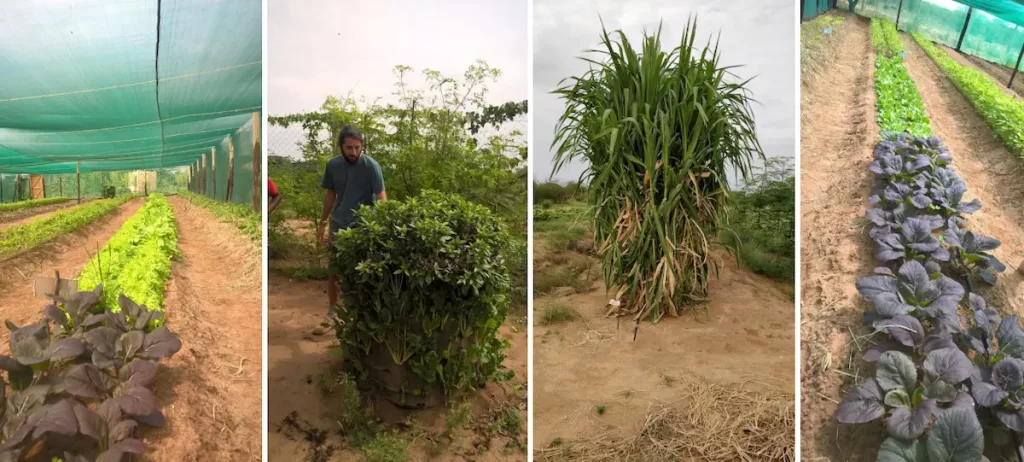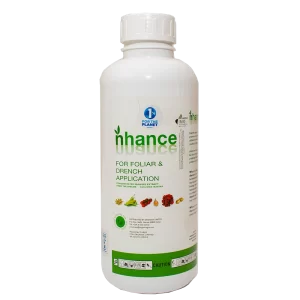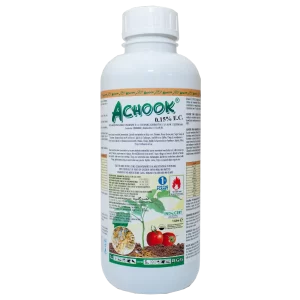
By Sven Verwiel, Director & Founder of Barefoot Soulutions which works with communities, clients and the environment to restore functional landscapes and build sustainable food systems that mimic natural patterns. Barefoot Soulutions offer professional permaculture consultancy services. | Email: sven.barefoot@gmail.com
We continue from last week’s PART ONE . Sven shares his observations and experience with application of Organix products for farming in Turkana and other parts of Kenya.
We move next to Nhance; a seaweed extract from the rich Southern African Waters. Nhance has two applications;
- one for drenching and foliar, and
- the other for seed treatment.
I’ll start with the first and the application we use it for most commonly.

We started scratching our heads when we first started transplanting small seedlings from our nursery to the field in Turkana. Even the best attempts at transplanting very late in the evening or very early in the morning, were never 100% fail proof. We were finding that the transplanting shock and high temperature soils were killing or seriously damaging a significant percentage of our young crops. Until we started using Nhance. It all came to me the first time we started using it. I remember clearly; it was a hot November day and I had selected a few small papaya, chillie and eggplant, as well as some pakchoi and basil seedlings from the nursery. It was already late in the morning and as soon as I took these little suckers out of their safe “shadenet” nursery, they already started drooping and sagging.
Feeling bleak about it, I decided to drench them in the recommended 1:100 ratio with water. To my surprise, the incredibly fatigued and shocked seedlings had all recovered within half an hour and were standing upright, happy, and tall as they once were in the nursery only one hour after the drench had been done. Since then, we have never looked back and transplant anything (trees, crops, and veg alike) with Nhance.
We also use the same ratio in a knapsack and do foliar application on fruit trees every month to increase new growth and improve root development. Recently, we have been using the seed treatment for cereal and fodder crops, which helps germination and early root development.
Lastly, Achook is a nice pest control product as it is very safe and easy to use. Out of any of the agri-inputs, it is the combo of pesticides, fungicides, and herbicides are by far the most dangerous and harmful of them all; alongside continual ploughing perhaps. Achook is a highly concentrated neem extract that does not kill beneficials, but is affective against nematodes, chewing, and sucking pests. It has a very low pre harvest interval of only 8 hours and is very easy to use. Once again, its cheap!

I have only touched on five of the Organix products, even though there are many more that they have available. I chose to discuss these five because when used together, they form a very easy to use, safe, effective and environmentally friendly battalion of soil enhancing, water saving, yield increasing, resilient agri inputs that anyone can use from the small to medium and large enterprise. And they are available from “one shop!”. This means you no longer have to deal with many suppliers and with complicated products that you do not trust.
Before finishing, I would like to touch on 2 key features that ultimately lead to success. The first is that you MUST use the products correctly. Even though they are easy to use, getting the quantity right and applying the products correctly is obviously key to getting the most efficiency and results out of the products.
Secondly, and perhaps more importantly is the design framework in which you incorporate these products. Largely influenced by principles of natural farming and agro-ecology, we always aim to design our farms and landscapes with minimum input, maximum output philosophy. We also maximize on space and efficiency as well as work with the landscape to be water wise and be inclusive of nutrient cycling. When you incorporate resilient designs and use the right products, you will be shocked at your rate of success.And believing in your designs usually only happens when you see the elements coming together to form functional and productive landscapes.
Please get in touch if you are interested in using Organix products and incorporating them into permaculture designs… There is a combination that works for everyone.


